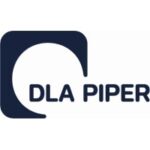-
How active is the securitisation market in your jurisdiction? What types of securitisations are typical in terms of underlying assets and receivables?
Since the adoption of the Securitisation Law (see definition under paragraph 3 below) in 2004, Luxembourg has been a very active market for the set-up of securitisation vehicles and the structuring of securitisation transactions and has become one of the major hubs for securitisation transactions in Europe. The amendment of the Securitisation Law in 2022 further increased the efficiency and attractiveness of the Luxembourg securitisation market. The Securitisation Law is very flexible and allows any type of securitisation transaction, with private placement or offer to the public, true sale or synthetic, tranched or untranched, whereby the underlying assets can be passively or actively managed. Securitisation vehicles may be regulated or unregulated (see paragraph 9 below) and can create compartments to ring fence the assets and liabilities of a securitisation transaction from the ones of other transactions of the same securitisation vehicle. Of more than ca. 1565 securitisation vehicles (ca, 6000 – 8000 compartments) active in Luxembourg as of 31 December 2024, only 30 securitisation vehicles are, as of today, regulated and subject to the supervision of the Luxembourg financial sector commission. Securitisation vehicles in Luxembourg mainly invest in loans and debt securities and a significant proportion of them has exposures in equity instruments or fund units.
Typical underlying assets in Luxembourg securitisations include mortgage-backed securities (both residential and commercial), collateralised debt obligations such as collateralised loan obligations and collateralised bond obligations, as well as a variety of asset-backed securities encompassing loans, mortgages, non-performing loans, auto loans, lease receivables, trade receivables, and receivables related to real estate or small and medium enterprise financing.
-
What assets can be securitised (and are there assets which are prohibited from being securitised)?
The Securitisation Law does not provide any limitation with respect to the assets that may be securitised. The Luxembourg Commission for the Supervision of the Financial Sector (Commission de Surveillance du Secteur Financier) (the CSSF) issued frequently asked questions on securitisation (the CSSF FAQ) that are generally used as guidance also for unregulated securitisations. According to the CSSF FAQ, various types of securitisation transactions can be contemplated, provided that they comply with the legal definition of securitisation (see paragraph 3 below) and the spirit of the Securitisation Law. It is worth noting that following its amendment in 2022, the Securitisation Law provides that securitisation undertakings are capable of holding and securitising real estate assets in both a direct and indirect manner through a wholly or partly owned entity. The main asset classes that are securitised in Luxembourg are bonds, repackaged securities and trade or lease receivables.
-
What legislation governs securitisation in your jurisdiction? Which types of transactions fall within the scope of this legislation?
The Luxembourg law of 22 March 2004 on securitisation, as amended (the Securitisation Law) with its most recent amendment being implemented via the law of 25 February 2022, amending the Law of 22 March 2004 on securitisation, as amended, and the Regulation (EU) 2017/2402 of the European Parliament and of the Council of 12 December 2017 laying down a general framework for securitisation and creating a specific framework for simple, transparent and standardised securitisation (the EU Securitisation Regulation) are the legal framework governing securitisation transactions in Luxembourg.
The Securitisation Law is very flexible and allows any type of securitisation transaction. Art. 1 of the Securitisation Law defines securitisation as “the transaction by which a securitisation undertaking acquires or assumes, directly or through another undertaking, risks relating to claims, other assets, or obligations assumed by third parties or inherent to all or part of the activities of third parties and issues financial instruments or contracts, for all or part of it, any type of loan, whose value or yield depends on such risks”. The flexibility of the Securitisation Law was further enhanced via its latest amendment which provided that securitisation vehicles can be financed via (i) issuing financial instruments or (ii) entering into any form of borrowing. These provisions essentially replaced the use of the term “securities” with “financial instruments”, abandoning also the ambiguity which accompanied the interpretation of the former term. In this respect, the amendment allowed securitisation undertakings to be financed with securities and instruments which do not necessarily qualify as transferable securities under foreign law (for example with the German Schuldscheine). Additionally, securitisation undertakings can be financed by all types of loans. A legal prerequisite for the above, is that the performance of both the issued financial instruments and the assumed loans depend on the cash flows generated from the underlying assets.
Further, dematerialised securities using distributed ledger technology such as the Blockchain qualify as financial instruments under the Securitisation Law. Token issuers are legally permitted to execute transactions without requiring a specific license under Luxembourg law to issue securities in a tokenised form. It has to be noted that, under Luxembourg laws, dematerialised securities must be recorded in a securities issuance account, which may be kept using distributed ledger technology, to be held with a settlement organisation, which, inter alia, shall be designated by the Luxembourg Central Bank, or a central account keeper and shall be authorised in accordance with the relevant provisions applicable to central account keepers in the law of 5 April 1993 on the financial sector, as amended (the “Financial Sector Law”). Additionally, the amendments introduced by the Law of 14 March 2023, known as the Blockchain III Law, have implemented Regulation (EU) 2022/858 of 30 May 2022, which establishes a pilot scheme for market infrastructures based on distributed ledger technology. This ensures that the distributed ledger technology-based infrastructure for the issuance of tokenised securities is available and provides Luxembourg market participants with complete legal certainty, while fully capitalising on the potential of this new technology.
-
Give a brief overview of the typical legal structures used in your jurisdiction for securitisations and key parties involved.
Given the flexibility provided under the Securitisation Law, there is no typical legal structure. Securitisation can be completed (i) on a true sale basis, whereby the securitisation vehicle acquires full legal title in relation to the underlying assets, or (ii) by the synthetic transfer of the risk pertaining to the underlying assets through the use of derivative instruments including double layer structures with an acquisition and an issuing vehicle. The notes issued by the securitisation vehicle may be untranched, i.e., all noteholders’ claims will rank pari passu or tranched, with junior and senior noteholders. Single asset securitisation is also possible, whereby the securitisation vehicle securitises a risk pertaining to a single asset.
Following the amendment of the Securitisation law in 2022, it is more and more common to witness securitisation vehicles being financed by loans instead of debt financial instruments. These loan agreements can take the form of term or revolving facilities and they usually provide for the possibility of syndication. Such loan agreements are entered into on a limited-recourse basis and their repayment depends on the cashflows generated by the respective underlying assets.
Furthermore, the Securitisation Law allows active management of the securitised assets in certain types of transactions, as long as the transactions are not financed by way of offering financial instruments to the public. Hence, Luxembourg securitisation undertakings may securitise a pool of risks consisting of debt securities, financial debt instruments or receivables which are actively managed, either by the undertaking itself, or by a third party. In practice, the applicable legal framework allows for securitisation of actively managed Collateralised Debt Obligations (“CDOs”) and Collateralised Loan Obligations (“CLOs”) in private placements. The securitisation vehicle may be set up as a company or by tax transparent entities such as a securitisation fund or limited partnerships (see paragraph 14 below) – which latter forms are regaining practical attention in the Luxembourg market as a result of the ATAD framework, which was introduced in 2019.
Based on the structure of the securitisation, including the governing law of the notes, there may be few or many key parties involved depending on the transaction structure. Typical parties would be the arranger, the originator, the account bank and the paying agent. Additional parties may be the management company (in case of a securitisation fund), the lead manager, the security agent or trustee, the selling agent, the liquidity provider, the servicer, the back-up servicer, the placement agent, etc.
-
Which body is responsible for regulating securitisation in your jurisdiction?
Securitisation transactions, where notes are issued to the public on a continuous basis (see paragraph 9 below) and securitisation transactions governed by the EU Securitisation Regulation, are subject to the supervision of the CSSF.
-
Are there regulatory or other limitations on the nature of entities that may participate in a securitisation (either on the sell side or the buy side)?
There are no general regulatory or other limitations in the nature of entities that may participate in a securitisation on the sell side. Certain structures require the involvement of regulated entities. The granting of loans to the public for own account is a regulated activity in Luxembourg. In this respect an originator who engages in such activity and sells such loans to a securitisation vehicle, should be an authorised financial institution.
With respect to placement of notes to investors, the frameworks set out by the Markets in Financial Instruments (MiFID II) – Directive 2014/65/EU (MiFID II) and by the Regulation (EU) 2017/1129 of the European Parliament and of the Council of 14 June 2017 on the prospectus to be published when securities are offered to the public (the Prospectus Regulation), and the Regulation (EU) No. 1286/2014 on key information documents for packaged retail and insurance-based investment products (the PRIIPs Regulation) should be taken into account, in particular when securitised notes are offered to the public.
-
Does your jurisdiction have a concept of “simple, transparent and comparable” securitisations?
The concept of “simple, transparent and standardised” securitisations was introduced for the first time in Luxembourg by the EU Securitisation Regulation.
-
Does your jurisdiction distinguish between private and public securitisations?
Offer of securitised notes are typically structured as a private placement or offer to the public. Naturally securitisations financed via loans, instead of financial instruments, are by default private. Private securitisations are not subject to disclosure requirements (unless they fall under the definition of securitisation for the purpose of the EU Regulation Securitisation). Public securitisations are subject to the disclosure requirements of the Prospectus Regulation and, under certain circumstances, may be subject to the prudential supervision of the CSSF (see paragraph 9 below).
-
Are there registration, authorisation or other filing requirements in relation to securitisations in your jurisdiction (either in relation to participants or transactions themselves)?
Upon the creation of a securitisation vehicle, a distinction should be made between regulated and unregulated vehicles. This distinction will be relevant notwithstanding the form of the vehicle, it being either a company or a securitisation fund. Under Article 19 of the Securitisation Law, a Luxembourg securitisation vehicle which intends to issue financial instruments to the public on a continuous basis must be authorised by the CSSF.
Following the amendment of the Securitisation Law in 2022, Article 19 provides that on a continuous basis means more than three issues of financial instruments to the public per year. Moreover, there is no public offering provided that financial instruments are issued (A) only to professional clients (as the term is defined in the Financial Sector Law), and (B) with a minimum subscription amount of EUR 100,000 per investor and (C) as a private placement. In practice, vehicles which are intended to have an unregulated activity only will be advised to clarify this in their corporate object clause. Conversely, vehicles which are intended to be regulated by the CSSF should refer to such activity in their articles of association and their incorporation will be conducted in close discussion with the CSSF.
The incorporation of a regulated vehicle will require the filing of documents with the CSSF for the purpose of authorisation, a list of which is provided by an annex to the CSSF FAQ. These relate mainly to the vehicle, its management and shareholding structure, the various types of financial instruments to be issued, the financing and auditing of the vehicle and at least a three-year business plan and an overview of the contemplated commissions, charges and projected income of the vehicle. The regulated securitisation vehicle must also provide the CSSF with the information and documents listed under the CSSF FAQ 17, such as the issue documents, financial reports, information on any change of service provider, half-year reports with the listing of the issued notes and must obtain the prior approval of the CSSF before changing the management, the external auditors and the shareholding structure. On the contrary, the creation of an unregulated securitisation vehicle in the form of a company or of a fund will not imply any specific registration or filing in addition to the registration and filing of its articles of association with the trade and companies register in Luxembourg nor any authorisation procedure with the CSSF.
During the life of the securitisation vehicle, the “transparency” reporting obligations provided by article 7 of the EU Securitisation Regulation will apply to those transactions, which qualify as a securitisation for the purpose of, and as defined in, Article 2 (1) of the EU Securitisation Regulation. From a Luxembourg law perspective, the most distinctive criterion, being the existence of tranching defined under the EU Securitisation Regulation as the feature that “the subordination of tranches determines the distribution of losses during the ongoing life of the transaction or scheme” entails that some vehicles, which are carrying out a securitisation activity under the broader definition of the Securitisation Law, will not fall within the ambit of the filing requirements under the EU Securitisation Regulation because they do not constitute a securitisation as defined in such EU Securitisation Regulation. The EU Securitisation Regulation was complemented by the Luxembourg law dated 16 July 2019 (the 2019 Law) which, though it does not create any further transparency requirements, designates the CSSF as the competent Luxembourg authority to receive the information required under Article 7 of the EU Securitisation Regulation. As per the EU Securitisation Regulation, “securitisation special purposes entities” (SSPEs) must make available to the competent authority, on a quarterly basis, information on their qualifying securitisations with regard to the underlying exposures, the underlying documentation that is essential for the understanding of the transactions, the transaction summaries, investor reports, inside information and significant events. These transparency obligations are set out in article 7.1 of the EU Securitisation Regulation, which applies in all Member States. Contrary to the national legal framework of other EU Member States, SSPEs located in Luxembourg do not need to notify ex ante the CSSF for a securitisation transaction falling under the scope of the EU Securitisation Regulation – the delivery of the transaction summary at the pre-closing stage is sufficient.
For statistical purposes, Luxembourg securitisation vehicles have an obligation to perform a quarterly and annual reporting of their total assets and of their transactions to the Luxembourg central bank (Banque centrale du Luxembourg). This obligation, which is further set out in the circulars n°2009/224 and 2014/236 issued by the Luxembourg central bank, will not apply provided (i) the vehicle complies with its obligations to publish its financial statements and (ii) its total assets (total du bilan) are lower than a certain threshold (set since 2017 at EUR 70 million).
There are no other registration, authorisation or filing requirements for other participants of securitisation transactions.
-
What are the disclosure requirements for public securitisations? How do these compare to the disclosure requirements to private securitisations? Are there reporting templates that are required to be used?
There are no disclosure requirements for public or private securitisation vehicles under the Securitisation Law.
If the public securitisation falls under the scope of the Prospectus Regulation and it is not subject to an exemption therein, then a prospectus should be drawn and approved in accordance with the framework set out by the Prospectus Regulation. In particular, the prospectus should provide disclosure of the information required under Annex 9 and Annex 19 of the Commission Delegated Regulation (EU) 2019/980 supplementing the Prospectus Regulation (the PR Regulation). At the same time, the Regulation (EU) No 1286/2014 of the European Parliament and of the Council of 26 November 2014 on key information documents for packaged retail and insurance-based investment products, as amended, (the “PRIIPs Regulation”) applies to public securitisations which offer their instruments to retail investors. The possible overlap between the summary of the PR Regulation and the Key Information Document (KID) of the PRIIPs Regulation, is avoided by the provisions of the PR Regulation which allow the substitution of the summary for the KID under certain circumstances.
-
Does your jurisdiction require securitising entities to retain risk? How is this done?
Article 5 of the EU Securitisation Regulation requires that the originator, sponsor or original lender of a “securitisation” (as defined therein) shall retain, on an ongoing basis, a material net economic interest in the securitisation transaction of no less than 5%.
-
Do investors have regulatory obligations to conduct due diligence before investing?
The Securitisation Law does not provide a regulatory obligation for investors to conduct due diligence before investing in a securitisation position. However, in practice, such obligation will arise in the following circumstances.
First, in relation to securitisation transactions which qualify as a securitisation under the EU Securitisation Regulation, institutional investors are required by Article 6 of the EU Securitisation Regulation to perform a minimum due diligence involving several verifications. Prior to holding the securitisation position, institutional investors must verify that the originator or original lender has established and actually applies “sound and well-defined criteria” in the granting of the credits, which constitute the underlying exposures and that it is compliant with the risk retention and transparency requirements imposed by the EU Securitisation Regulation for all qualifying securitisations. They must also carry-out a due diligence assessment which enables them to assess the risks involved. Once they are holding the securitisation position, institutional investors are also bound by ongoing due diligence requirements (i) to establish appropriate written procedures that are proportionate to the risk profile of the securitisation position, (ii) to perform stress tests on the cash flows, the collateral of the underlying and the liquidity of the sponsor, as the case may be, (iii) to ensure internal management reporting and (iv) to be able to demonstrate to the CSSF upon request that they have a comprehensive and thorough understanding of the securitisation position and exposures and of the credit quality of the sponsor, as the case may be.
Second, some further due diligence obligations may arise as a result of an investment strategy or specific guidelines agreed between the investor and its clients on behalf of whom the investment is made. They may also arise as a result of the regulatory status of the investor itself.
-
What penalties are securitisation participants subject to for breaching regulatory obligations?
Article 18 of the 2019 Law, implementing articles 32 to 34 of the EU Securitisation Regulation, provides the administrative sanctions that may be imposed by the CSSF in case of breach by a sponsor, an originator or a securitisation vehicle of the requirements applicable to it under the EU Securitisation Regulation. Article 32 of the EU Securitisation Regulation provides for minimum sanctions that the Member States had to introduce in their national law. The 2019 Law implements this minimum level of sanctions, being the issue of a public statement specifying the identity of the person concerned and the nature of the infringement, a temporary ban on management functions for the management of the legal person, administrative pecuniary sanctions up to twice the amount of the advantage gained from the breach, or up to EUR 5,000,000 or, for a legal person, up to ten per cent of its net turnover of the last financial statements and a temporary ban for an entity not notifying securitisations constituting EU Securitisation securitisations. In addition, the CSSF can impose administrative pecuniary sanctions against persons, who obstruct the exercise of its supervisory powers.
In addition, the Securitisation Law itself, being the national legal framework, contains sanctions which may be imposed by the CSSF on securitisation vehicles.
Under Article 25 of the Securitisation Law, the CSSF may take sanctions against a regulated securitisation vehicle which does not comply with the provisions of the Securitisation Law. These sanctions are administrative, non-pecuniary sanctions. In particular, these sanctions may result in the prohibition to issue financial instruments, or the suspension of their listing, or the appointment of a provisional administrator for the securitisation vehicle and, more importantly, the withdrawal of the CSSF licence. This last sanction is in practice a significant inducement to comply with the Securitisation Law, because the CSSF will remove the relevant securitisation vehicle from the list of authorised regulated securitisation vehicles and will be entitled consequently to request the public prosecutor to pursue the forced liquidation of the securitisation vehicle before the district court dealing with commercial matters (the Tribunal d’arrondissement) (respectively under Article 21 and Article 39 of the Securitisation Law).
The CSSF may further impose upon the directors, managers and officers of regulated securitisation vehicles (and their liquidators in case of a voluntary liquidation), a pecuniary sanction of EUR 125 to 12,500 in the event they refuse to provide the CSSF with financial reports or other requested information or where such documents prove to be incomplete, inaccurate or false, or if the existence of any other serious irregularity is established.
-
Are there regulatory or practical restrictions on the nature of securitisation SPVs? Are SPVs within the scope of regulatory requirements of securitisation in your jurisdiction? And if so, which requirements?
The Securitisation Law allows securitisation vehicles to be set up either in the form of a fund or in the form of a company. For both types of securitisation vehicles, Luxembourg law offers a great deal of flexibility. Hence, there are no actual regulatory or practical restrictions on the nature of securitisation vehicles.
Securitisation funds can be legally structured either as co-ownership(s) or as fiduciary estate(s), which option will be specified in their management regulations. While securitisation funds structured as co-ownerships will, in addition, be governed by the Luxembourg civil code, the very specific civil law rules pertaining to undivided co-ownerships (indivision) are expressly excluded by Article 6 (4) of the Securitisation Law. The purpose of this exclusion is, in practice, to avoid the unanimous decision-making rules applying to undivided co-ownerships under the civil code. Securitisation funds which have been organised as a fiduciary estate will, in addition, be governed by a specific Luxembourg law dated 27 July 2003 on trust and fiduciary agreements, as amended. Both types of securitisation funds are managed by a management company. The only practical restriction in their respect is that their structuring will need specific attention to avoid the risk of qualification as an alternative investment fund. While solutions exist to avoid such qualification, which mainly relate to the types of financial instruments issued, the absence of a defined investment policy and the absence of active management, a tailored and cautious drafting of the management regulations of the securitisation fund will be crucial.
Securitisation companies may, under Article 4 (1) of the Securitisation Law, be set up as a public limited liability company (société anonyme), a corporate partnership limited by shares (société en commandite par actions), a private limited liability company (société à responsabilité limitée) or a co-operative company organised as a public limited company (société cooperative organisée comme une société anonyme) and, following the latest amendment of the Securitisation Law, as an unlimited company (société en nom collectif), a common limited partnership (société en commandite simple), a special limited partnership (société en commandite spéciale), and a simplified joint stock company (société par actions simplifiée).
Other than those set out above there are no regulatory requirements applicable to securitisation vehicles, such as limitations on leverage or institutional rules of internal governance.
-
How are securitisation SPVs made bankruptcy remote?
The insolvency remoteness of securitisation vehicles is achieved through the use of statutory or contractual limited recourse and non-petition clauses in the contractual, issuance and incorporation documentation. Due to the opt-in nature of the Securitisation Law in general and its explicit provisions on limited recourse and non-petition clauses (as described below), the bankruptcy remoteness of securitisation vehicles can be achieved only if statutory or contractual provisions are in place. Limited recourse clauses provide that the rights of the investors and creditors of the securitisation vehicle or of its compartments are limited to the assets of such vehicle and compartments. These clauses are associated with non-petition clauses, whereby the investors and creditors of the vehicle or its compartments undertake not to start insolvency proceedings against the vehicle once the assets allocated to the vehicle or the relevant compartments have been realised but there is a shortfall. In practice, non-petition clauses sometimes consist in an undertaking not to make any claim for a certain period of time, rather than an absolute and permanent undertaking.
As limited recourse and non-petition clauses could be seen as contrary to general principles of civil law, their validity is expressly admitted and confirmed by the Securitisation Law, which Articles 62 and 64 provide respectively that “(1) The rights of the investors and of the creditors are limited to the assets of the securitisation undertaking. Where such rights relate to a compartment or have arisen in connection with the creation, the operation or the liquidation of a compartment, they are limited to the assets of that compartment. (2) The assets of a compartment are exclusively available to satisfy the rights of investors in relation to that compartment and the rights of creditors whose claims have arisen in connection with the creation, the operation or the liquidation of that compartment.” and that “(3) The articles of incorporation, the management regulations of a securitisation undertaking and any agreement entered into by the securitisation undertaking may contain provisions by which investors and creditors undertake not to seize the assets of the securitisation undertaking nor, as the case may be, of the issuing or acquisition vehicle, and not to petition for bankruptcy thereof or request the opening of any other collective or reorganisation proceedings against them. (4) Proceedings initiated in breach of the provisions referred to in paragraph 1 or of the provisions referred to in paragraphs 2 and 3 shall be declared inadmissible.”.
-
What are the key forms of credit support in your jurisdiction?
Under Luxembourg law, credit support can take various forms, from the most traditional forms of contractual undertakings pertaining to civil contract law to a more recent, highly creditor-friendly financial collateral regime.
First, the Luxembourg law dated 5 August 2005 on financial collateral arrangements, as amended provides for various techniques to grant collateral in guarantee for financial debts, namely pledges, transfers of title for security purposes (including by way of fiduciary transfer) and repurchase agreements. The collateral under these arrangements can take the form of any “financial instruments and claims”. A variety of assets may consequently be used as financial collateral. Typical collateral will take the form of shares, bonds, intercompany receivables, bank accounts and securities accounts, without prejudice to more peculiar sorts of collateral such as insurance receivables and the capital commitments of the investors in a fund.
Second, the entire range of in rem securities under civil law may also be granted, such as commercial pledges, inventory pledges (gage sur fonds de commerce) or mortgages over real estate property.
Third, the Luxembourg civil code provides an entire regime for suretyships (cautionnements), but also recognises the enforceability of other personal securities such as autonomous guarantees, comfort letters or other sui generis personal undertakings. In addition, the law on professional payment guarantees dated 10 July 2020 (the “Professional Guarantee Law”) introduced a new form of flexible professional payment guarantee, which may be adapted to the specific transaction, with the provisions agreed by the parties receiving full recognition under Luxembourg law, without risk of recharacterisation. The Professional Guarantee Law was introduced specifically for securitisation and structured finance transactions.
Fourth, the use of derivatives such as credit default swaps and other hedging instruments is also possible.
Fifth, Luxembourg law accepts, under certain conditions, the use of subordination as a means to enhance the position of a party granting credit to another. In particular, the Securitisation Law expressly acknowledges the validity of subordination clauses in the context of securitisation transactions.
Finally, the latest amendment of the Securitisation Law further enhanced the flexibility of securitisation vehicles regarding the granting of security rights. It is now provided that securitisation undertakings can provide collateral to cover all commitments relating to a securitisation transaction and only to secure the claims of direct creditors and investors.
-
How may the transfer of assets be effected, in particular to achieve a ‘true sale’? Must the obligors be notified?
Under Article 55 (1) of the Securitisation Law, “the assignment of an existing claim to a securitisation vehicle becomes effective between the parties and against third parties as from the moment the assignment is agreed on, unless the contrary is provided for in such agreement”. Under Article 56 (1) of the same law, “the claim assigned to a securitisation vehicle becomes part of its property as from the date on which the assignment becomes effective”. There exists, under article 1690 of the Luxembourg civil code, a requirement to notify the obligor of the assignment. However, a failure to comply with this requirement does not make the assignment void, neither between the parties nor as against third parties. Only, pursuant to Article 56 (3) of the Securitisation Law, “the assigned debtor is validly discharged from its payment obligations by payment to the assignor as long as it has not gained knowledge of the assignment.”
Most importantly, the assignment of future claims to a securitisation entity is possible provided that the future claim can be identified as being part of the assignment at the time it comes into existence. The Securitisation Law provides, in this respect, a very protective regime, which ensures very high legal certainty with respect to the sale. Indeed, under Article 55 (3) of the same law, when the relevant future claim comes into existence, the assignment becomes effective between parties and against third parties as from the moment the assignment had been agreed on, notwithstanding the opening of bankruptcy proceedings or any other collective proceedings against the assignor before the date, on which the claim comes into existence.
It is also worth noting that under certain conditions, Article 57 of the Securitisation Law will consider the assignment as valid even though the assignment of the receivable was prohibited by the agreement, under which the receivable arose.
-
In what circumstances might the transfer of assets be challenged by a court in your jurisdiction?
As a principle, this may not happen except as a result of legal rules which are not specific to securitisation transactions, such as the rules of consent or contract formation. The Securitisation Law creates a particularly strong protection of the validity and enforceability of assignments of receivables to a securitisation vehicle, as described above.
This is without prejudice, though, to a challenge which would be based on a foreign law governing the receivable and its assignment. Indeed, as provided by Article 58 of the Securitisation Law, “The law governing the assigned claim determines the assignability of such claim, the relationship between the assignee and the debtor, the conditions under which the assignment is effective against the debtor and whether the debtor’s obligations have been validly discharged.”.
-
Are there data protection or confidentiality measures protecting obligors in a securitisation?
In Luxembourg, there are not any specific principles applying to debtors in the context of a securitisation. As in other Member States, data protection is ensured by the direct application of Regulation (EU) 2016/679 of the European Parliament and of the Council of 27 April 2016 on the protection of natural persons with regard to the processing of personal data and on the free movement of such data (the GDPR). In practice, where a securitisation implies a transfer of personal data to the securitisation entity, this issue is dealt with through two alternative means: the first is to obtain the consent of the data subject ab initio when the receivable is created; the second is the recourse to a mechanism of data trustee, where only those information which are strictly necessary to the securitisation issuer are communicated to it, until a default occurs under the receivable. This type of mechanism is often used in cases of securitisation of consumer receivables.
-
Is the conduct of credit rating agencies regulated?
Regulation (EC) no 1060/2009 of the European Parliament and of the Council of 16 September 2009 on credit rating agencies, as amended from time to time (and most recently by Regulation (EC) no 2017/2402 of the European Parliament and of the Council) applies directly in Luxembourg. Some of its features have been implemented into Luxembourg law by the law dated 28 October 2011 implementing Regulation (EC) No 1060/2009. There is no additional regulation with respect to the conduct of credit rating agencies in Luxembourg.
-
Are there taxation considerations in your jurisdiction for originators, securitisation SPVs and investors?
Withholding tax
As a matter of principle, there is no withholding tax in Luxembourg on payments of all items of income from capital other than dividends. In particular, Luxembourg does not apply any withholding tax on interest paid by one of its residents to a Luxembourg non-resident (unless such interest is not at arm’s length or paid under a profit participating bond/security not qualifying as debt). The withholding tax exemption covers, among others, all payments made by securitisation companies or funds to their investors or other creditors.
By way of exception, payments of interest or similar income under a debt instrument that is listed and admitted to trading on a regulated market, made or ascribed by a paying agent (in the sense of the law of 23 December 2005, as amended, the Relibi Law) established in Luxembourg to or for an individual beneficial owner who is a resident of Luxembourg, will be subject to a withholding tax of currently 20%. Such a withholding tax will be in full discharge of income tax if the beneficial owner is an individual acting in the course of the management of his/her private wealth (the 20% Withholding Tax). Responsibility for the withholding of such tax will be assumed by the Luxembourg paying agent.
An individual beneficial owner of interest or similar income, who is a resident of Luxembourg and acts in the course of the management of his/her private wealth, may opt for a final 20% Withholding Tax when he/she receives or is deemed to receive such interest or similar income from a paying agent established in an EU Member State (other than Luxembourg) or in a state of the European Economic Area (which is not an EU Member State).
There is currently no guidance or specific rule under Luxembourg generally accepted accounting principles (Luxembourg GAAP) which recharacterises a discount or a deferred purchase price as interest. However, it should be noted that a repayment above the discounted price would be fully taxable unless such sale at a discount would be structured in a tax-efficient way. This position was also taken by Luxembourg lobbying groups.
VAT
A securitisation vehicle should be considered a “taxable person” according to Circular No. 723 issued by the Luxembourg Value Added Tax (VAT) Administration (Administration de l’enregistrement et des domaines) (unless it takes the form of a securitisation fund or an FCP (fonds communs de placement), in which case, it will be seen as an integral part of its management company considered as a single “taxable person”).
As “taxable persons”, securitisation vehicles have the obligation to self-account for Luxembourg VAT under the reverse-charge mechanism on any non-VAT exempt services (and to certain extent goods) received from outside Luxembourg. The VAT rates currently applying in Luxembourg (in securitisation context, the most relevant are the standard rate of 17% applying, e.g., on legal, tax, consulting services, and intermediate rate of 14% applying on depository services limited to supervision and control) are typically lower than those of its neighbouring countries.
Based on Circular No. 723, securitisation vehicles should have no input VAT deduction right, however, a case-by-case analysis on the basis of the actual activities/investments performed is recommended.
Pursuant to article 44 1 d) of the Luxembourg law dated 12 February 1979 on value added taxes (the VAT Law), management services rendered to a securitisation vehicle are exempt from VAT.
The concept of “management” of securitisation vehicles is quite vague. In addition to the management of a portfolio of assets, some administrative services should benefit from the VAT exemption, to the extent they form a distinct whole and fulfil the specific and essential functions of the management of a securitisation vehicle. The exemption should however not be available for purely material and / or technical services and cannot apply to ‘isolated’ services within the meaning of the Circular No. 723bis issued by the Luxembourg VAT Administration, including, notably, isolated debt collection.
It should be noted that where a securitisation vehicle purchases debts/receivables at a price below their face value, it should be considered not performing any debt collection service where the difference between the face value and the purchase price reflects the actual economic value of the debts/receivables at the time of the purchase.
Corporate income tax and municipal business tax
Regarding corporate income tax and municipal business tax, the tax treatment depends on the corporate form of the purchaser.
A. Securitisation vehicle organised as a corporate entity
A securitisation vehicle organised as a corporate entity with either its statutory seat or central administration in Luxembourg, is fully liable to corporate income and municipal business taxes at an aggregate tax rate of 23.87% (irrespective of the vehicle’s activity and possible appointment of a servicer or collection agent), which is the applicable rate for Luxembourg City for fiscal year 2025.
Even though a securitisation company is fully taxable, its commitments made by the purchaser to remunerate its investors qualify as interest on debt (even if paid as return on equity).
As of 1 January 2019, however, due to the transposition into Luxembourg tax law of the interest deduction limitation rule (article 168bis of the Luxembourg Income Tax Law (LITL)), deduction of interest qualifying as “exceeding borrowing costs” is limited up to the higher of:
(i) 30% of the company’s EBITDA (defined as the total net income increased by the exceeding borrowing costs, depreciation and amortisation); or
(ii) EUR 3 million.
The EUR 3 million thresholds is to be calculated on the company level and not on the compartment level only.
Exceeding borrowing costs are defined as the amount by which the deductible borrowing costs of a taxpayer exceeds taxable interest revenues and other economically equivalent taxable income of the taxpayer.
Interestingly, although borrowing costs are defined, there is no definition of “interest revenues and other equivalent taxable income”. According to the Luxembourg tax administration circular dated 25 March 2022 (the Circular), the term “interest income and other equivalent taxable income” should be interpreted by analogy with the definition of “borrowing costs”, and encompass by symmetry the items listed under the latter definition (e.g., these include, but are not limited to: payments under profit participating loans; imputed interest on instruments such as convertible bonds and zero-coupon bonds; amounts paid under alternative financing arrangements, such as Islamic finance, the finance cost element of finance lease payments, capitalised interest included in the balance sheet value of a related asset, or the amortisation of capitalised interest; amounts measured by reference to a funding return under transfer pricing rules; notional interest under derivative instruments or hedging arrangements related to an entity’s borrowings; certain foreign exchange gains and losses on borrowings and instruments connected with the raising of finance guarantee fees for financing arrangements; and arrangement fees and similar costs related to the borrowing of funds). The position of the Luxembourg tax administration hence follows the recommendations of the Luxembourg Chamber of Commerce on the corresponding draft law implementing the interest deduction limitation rule.
Exceeding borrowing costs not deductible in a tax period can be carried forward indefinitely. Excess interest capacity, which cannot be used in a given tax period, can also be carried forward (however, this is for a period of maximum of five years).
Exemptions to the interest deduction limitation rule have been introduced, as follows:
- Grandfathering: debt instruments concluded before 17 June 2016 shall not fall within the scope of the interest limitation rule to the extent that they have not been amended. The amount of exceeding borrowing costs shall be computed as if no amendments have taken place.
- Equity escape rule: Where a taxpayer is a member of a consolidated group for financial accounting purposes, it may, upon request, fully deduct its exceeding borrowing costs if it can demonstrate that its equity-to-assets ratio is higher or at least equal (with a tolerance of lower by not more than two percentage points) than the equivalent ratio of the group. In order for the equity escape rule to apply, all assets and liabilities have to be valued using the same method as in the consolidated financial statements prepared in accordance with International Financial Reporting Standards (IFRS) or the national financial reporting system of an EU country.
- Stand-alone entity: stand-alone entities are exempt from the scope of application of the interest deduction limitation rule. A stand-alone entity is defined as a taxpayer that is not part of a consolidated group for financial accounting purposes and had no associated enterprise. The legal definition of “associated enterprise” as per art. 168ter LITL encompasses any entity – and not company – in which the taxpayer holds, directly or indirectly, 50% or more of voting, capital or profit interests, or an individual or entity that holds, directly or indirectly, 50% or more of voting, capital or profit interest in the taxpayer. In case of hybrid mismatches involving a financial instrument, the threshold of 50% is replaced by a threshold of 25%. Furthermore, in the category of associated enterprises are included entities that are part of the same consolidated group for financial accounting purposes as the taxpayer, enterprises in which the taxpayer has significant managerial influence or enterprises that have a significant managerial influence over the taxpayer. As a result, a securitisation company held by a trust, a foundation or a stitching should not be considered as a stand-alone entity under the interest deduction limitation rule. As per the Luxembourg law of 20 December 2019 implementing ATAD 2 into Luxembourg domestic law (the ATAD 2 Law), the so called “acting together” concept was introduced in the framework of associated enterprises to circumvent abusive splitting of holding of participations to third parties, into several persons or entities. Following this concept, an individual or an entity who acts together with another individual or entity in respect to the voting rights or capital ownership in another entity shall be treated as holding the other’s individual or entity’s participation.
- Financial undertaking: this is outside the scope of the interest deduction limitation rule, any entity which falls within the definition of a “financial undertaking” (under article 168bis LITL), is included in this definition, inter alia, (i) alternative investment funds in the meaning of the AIFM Directive 2011/61/EU, and (ii) EU securitisation vehicles that fall within the scope of article 2(2) of EU Regulation 2017/2402. Following the reasoned opinion sent to Luxembourg by the European Commission, and the subsequent project of law published in March 2022, EU securitisation vehicles should no longer benefit from this exclusion of scope. The legislative process in this respect is still pending.
- Single entity group: as of 1 January 2025, a new exemption for taxpayers qualifying as a “single entity group” has been introduced in LITL. These are taxpayers which, for the purposes of the interest deduction limitation rule, simultaneously (i) are not part of a consolidated group for financial accounting purposes, (ii) are not stand-alone entities and (iii) whose equity is higher or equal to the equity of the group (the group being the taxpayer itself) increased by any borrowing costs to associated enterprises. Such taxpayers could opt for the “single entity group” exemption for financial years starting on or after 1 January 2024. We would expect this exemption to be particularly relevant for securitisation vehicles not included in a financial consolidation, however, the actual practical implementation of the exemption is to be closely monitored.
To summarise the impact of the interest deduction limitation rule on securitisation transactions, securitisation companies with interest-bearing assets and liabilities should not be significantly affected. However, securitisation companies receiving income from funds or shares, repackaging and, to a certain extent, non-performing loans might be impacted by such rule. Such structures should be assessed on a case-by-case basis in order to determine whether they can qualify for any of the above exemptions or whether a restructuring is required (it should be noted that the absence of definition of an “interest revenue” leaves room for interpretation on certain kinds of hybrid income (e.g., capital gains on non-performing loans)).
In case of hybrid mismatch arrangements, securitisation companies might be also affected by the ATAD 2 Law extending the rules to neutralise hybrid mismatch effects. Hybrid mismatch arrangements can be briefly summarised as taking advantage of the different tax treatment of an entity or a financial instrument under the laws of two different jurisdictions to achieve either a double deduction or a deduction without inclusion. Such hybrid mismatch must arise either between associated enterprises or within a structured arrangement. The ATAD 2 Law has introduced a legal definition of structured arrangement being an arrangement involving a hybrid mismatch where the mismatch outcome is priced into the terms of the arrangement or an arrangement that has been designed to produce a hybrid mismatch outcome, unless the taxpayer or an associated enterprise could not reasonably have been expected to be aware of the hybrid mismatch and did not share in the value of the tax benefit resulting from the hybrid mismatch. In case a securitisation company issues a financial instrument with a hybrid character and the potential to be treated differently for tax purposes in the involved jurisdiction, the respective documentation would need to be carefully drafted in order to prove that no structured arrangement was intended.
On a separate note, securitisation companies may obtain tax residency certificates from the Luxembourg tax authorities to benefit from the European directives and Luxembourg’s important tax treaty network.
B. Securitisation funds
Securitisation funds should arguably be considered as transparent as investment funds for Luxembourg tax purposes. Hence, they are not liable to corporate income tax and municipal business tax, and remain unaffected by the interest deduction limitation rule. It should be noted that reverse hybrid mismatch rules applying to tax transparent vehicles are applicable in Luxembourg since 1 January 2022. Securitisation funds may be subject to the reverse hybrid mismatch rules subject to case-by-case analysis.
C. Securitisation vehicle organised as a partnership
As mentioned under question 14, securitisation vehicles may also be organised as partnerships, which are transparent entities for Luxembourg tax purposes. As a result, securitisation vehicles organised as partnerships will not be liable to corporate income tax and municipal business tax and are not in the scope of the interest deduction limitation rule. As it is the case for securitisation funds, it should be analysed on a case-by-case basis whether a given securitisation partnership is subject to the reverse hybrid mismatch rules.
Net wealth tax
Securitisation vehicles organised as corporate entities, although excluded from the general net wealth tax regime, are subject to minimum net wealth tax, which, as of fiscal year 2025 (following a decision of the Luxembourg Constitutional Court dated 10 November 2023 and a consecutive legislative reform), is determined as follows:
- EUR 535 when the total balance sheet is less than or equal to EUR 350,000;
- EUR 1,605 when the total balance sheet is greater than EUR 350,000 and less than or equal to EUR 2 million;
- EUR 4,815 when the total balance sheet is greater than EUR 2 million.
Securitisation funds and securitisation vehicles organised as partnerships are not liable to net wealth tax due to their tax transparency.
Stamp duty
According to article 52 (1) of the Securitisation Law, all agreements entered into in the context of a securitisation transaction, as well as all other deeds relating to such transaction, are exempt from registration formalities if they do not have the effect of transferring rights pertaining to Luxembourg real estate, aircraft or ships. However, they may be presented for registration, in which case they will be subject to a fixed charge of EUR 12.
Pillar 2
On 14 December 2022, the EU adopted the Council Directive (EU) 2022/2523 on ensuring a global minimum level of taxation for multinational groups in the Union (“Pillar 2 Directive“) built on the GloBE rules and expanding their scope to domestic groups. Pursuant to the Pillar 2 Directive, a jurisdictional effective tax rate of at least 15% is foreseen for Multinational Enterprise (“MNE”) groups with consolidated revenue of at least EUR 750m. Luxembourg has implemented the Pillar 2 Directive in the law of 22 December 2023 applying the related implementing provisions in respect of the fiscal years beginning from 31 December 2023 for the so-called “Income Inclusion Rule” (“IIR”) and the “Qualified Domestic Top-up Tax” (“QDMTT”) and in respect of the fiscal years beginning from 31 December 2024 for the “Undertaxed Payment Rule” (“UTPR”). Additionally, on 31 October 2024, the Luxembourg government incorporated into the Pillar 2 law the OECD’s Pillar 2 Administrative Guidance issued in June 2024, which concerns jurisdictions that have introduced QDMTT and discusses, in particular, securitisation vehicles in the context of the Pillar 2 rules.
Accordingly, at present, securitisation vehicles can, at least in theory, fall within the scope of Pillar 2 to the extent they are subject to “accounting consolidation” within the meaning of the Pillar 2 rules. However, should this be the case, the potential top-up tax liability of the securitisation vehicles should be allocated to the other Luxembourg based constituent entities part of the MNE group. In this respect, securitisation vehicles are excluded from the application of the joint and several liability mechanism. However, if there are no other Luxembourg based constituent entities in the MNE group, the amount of top-up tax should be allocated to the securitisation vehicles.
It should be mentioned that the above treatment of securitisation vehicles enables MNE groups to invoke the QDMTT safe harbour rule, pursuant to which, jurisdictions with Pillar 2 rules will in principle not be expected to apply IIR or UTPR provisions on Luxembourg entities that are subject to the Luxembourg QDMTT rule.
-
To what extent does the legal and regulatory framework for securitisations in your jurisdiction allow for global or cross-border transactions?
The Luxembourg legal framework for securitisations has a particular focus on legal issues arising in the context of global or cross-border transactions and to protect the interests of investors, sponsors and originators. Continuously driving innovation, Luxembourg has grown to become a key hub for securitisation and structured finance vehicles, which can blend perfectly into an international structure with non-Luxembourg elements.
-
How is the legal and regulatory framework for securitisations changing in your jurisdiction? How could it be improved?
The Luxembourg legal framework on securitisation is very sophisticated, flexible and recognised by the market. The recent amendment of the Securitisation Law made the securitisation legal framework even more attractive as it responded to the market demand for the issuance of any kind of financial instrument or the provision of loans to securitisation vehicles and the active management of the asset pool. In general, the Securitisation Law caters to almost all market demands. On the other hand, some uncertainty on an EU and national level may be caused by the EU Securitisation Regulation. Even though the latter does not necessarily require amendments, it certainly calls for clarifications especially with regard to its scope of application. The requirement of tranching and the so called “dependency test” are being interpreted by market participants in a non-coherent manner. Thus, the publication of guidance by central institutions would be helpful in establishing legal certainty in the EU securitisation market.
-
Are there any filings or formalities to be satisfied in your jurisdiction in order to constitute a true sale of receivables?
The type and nature of the formalities that need to be met in order for a transfer to be effectuated as a true sale depend on the applicable national legal framework, which, according to the Securitisation Law and the Regulation (EC) No 593/2008, will be determined by the law governing the assigned claim.
Under Luxembourg law the perfection of the sale of receivables by way of assignment requires the notification of the obligor pursuant to article 1690 of the Luxembourg Civil Code. Prior to the notification, and provided the obligor is not aware of the assignment, the obligor will be discharged while making payments to the seller and the sale will not be enforceable against any subsequent purchasers provided that they are acting in good faith. Nevertheless, as further described in answer 17, assignment of receivables in the context of securitisation transactions falling under the scope of the Securitisation Law, need not fulfil any formalities for their perfection.
Alternatively, the transfer of the ownership of receivables can take place via a title transfer collateral arrangement under the Law of 5 August 2005 (the “Collateral Law”). Through this mechanism the transferor transfers the ownership of the receivables to the transferee on the legal grounds (causa) of the provision of collateral. From a purely legal perspective, the receivables are transferred as collateral against the provision of cash (or other securities) from the transferee to the transferor and even though the former acquires full ownership of the transferred receivables and can further transfer them to third parties, it has an obligation to return them to the transferor in case the debt is repaid. In any event the transferee becomes the full owner of the transferred receivables and this transfer is perfected against the debtor and third parties upon its execution. However, the debtor of the transferred receivables will be discharged while making payments to the transferor unless the debtor has been notified of the existence of the transfer of title over the receivables to the benefit of the transferee.
Luxembourg: Securitisation
This country-specific Q&A provides an overview of Securitisation laws and regulations applicable in Luxembourg.
-
How active is the securitisation market in your jurisdiction? What types of securitisations are typical in terms of underlying assets and receivables?
-
What assets can be securitised (and are there assets which are prohibited from being securitised)?
-
What legislation governs securitisation in your jurisdiction? Which types of transactions fall within the scope of this legislation?
-
Give a brief overview of the typical legal structures used in your jurisdiction for securitisations and key parties involved.
-
Which body is responsible for regulating securitisation in your jurisdiction?
-
Are there regulatory or other limitations on the nature of entities that may participate in a securitisation (either on the sell side or the buy side)?
-
Does your jurisdiction have a concept of “simple, transparent and comparable” securitisations?
-
Does your jurisdiction distinguish between private and public securitisations?
-
Are there registration, authorisation or other filing requirements in relation to securitisations in your jurisdiction (either in relation to participants or transactions themselves)?
-
What are the disclosure requirements for public securitisations? How do these compare to the disclosure requirements to private securitisations? Are there reporting templates that are required to be used?
-
Does your jurisdiction require securitising entities to retain risk? How is this done?
-
Do investors have regulatory obligations to conduct due diligence before investing?
-
What penalties are securitisation participants subject to for breaching regulatory obligations?
-
Are there regulatory or practical restrictions on the nature of securitisation SPVs? Are SPVs within the scope of regulatory requirements of securitisation in your jurisdiction? And if so, which requirements?
-
How are securitisation SPVs made bankruptcy remote?
-
What are the key forms of credit support in your jurisdiction?
-
How may the transfer of assets be effected, in particular to achieve a ‘true sale’? Must the obligors be notified?
-
In what circumstances might the transfer of assets be challenged by a court in your jurisdiction?
-
Are there data protection or confidentiality measures protecting obligors in a securitisation?
-
Is the conduct of credit rating agencies regulated?
-
Are there taxation considerations in your jurisdiction for originators, securitisation SPVs and investors?
-
To what extent does the legal and regulatory framework for securitisations in your jurisdiction allow for global or cross-border transactions?
-
How is the legal and regulatory framework for securitisations changing in your jurisdiction? How could it be improved?
-
Are there any filings or formalities to be satisfied in your jurisdiction in order to constitute a true sale of receivables?













